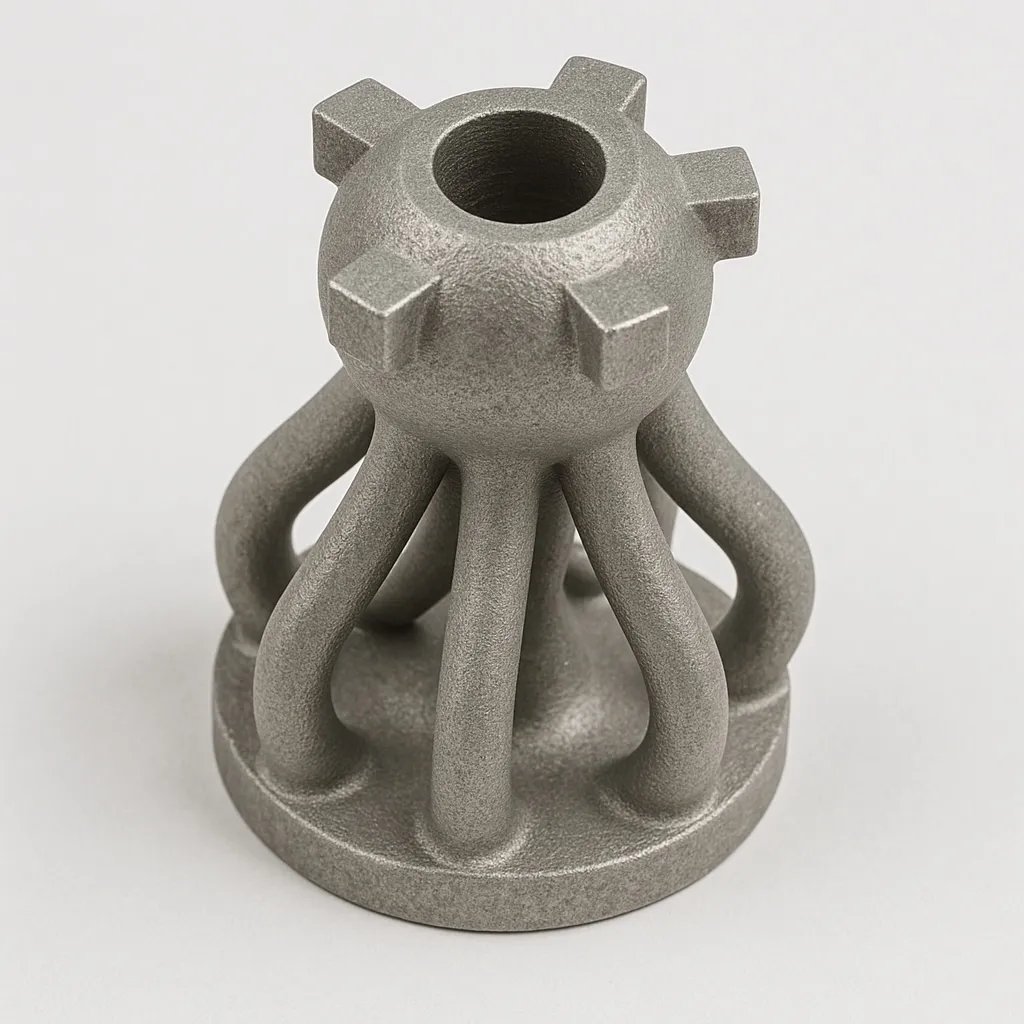Metal 3D printing sounds futuristic—and in many ways, it is. The idea that you can take powdered titanium or stainless steel, melt it layer by layer with a laser, and end up with a functional part? That’s powerful. But like most technologies, it’s not magic.
Sometimes it’s exactly the right call. Sometimes it’s just expensive overkill.
At Ziqual, we work with shops that offer both traditional and additive manufacturing, and we’ve learned when metal printing is worth it—and when it’s better to mill that block of 6061 instead.
So let’s walk through it. Here’s when metal 3D printing starts to make real sense.
1. Your Geometry Is Un-machinable
Let’s start with the most obvious reason: complex geometry.
If your part has internal channels, lattice structures, organic curves, or any kind of geometry that can’t be reached with a mill or lathe, additive manufacturing opens the door.
Think: heat exchangers with internal fins, conformal cooling channels in molds, or lightweight structural parts with hollow bones.
If your part would require 5-axis machining, EDM, and assembly from multiple components—metal 3D printing might consolidate all of that into a single build.
👉 This is where 3D printing isn’t just a manufacturing process—it’s a design enabler.
2. You're Trying to Reduce Weight Without Losing Strength
Some applications just can’t carry extra weight:
- Aerospace
- Motorsports
- Drones
- Robotics
With metal 3D printing, you can reduce mass by strategically removing material in places where it isn’t needed—while still keeping strength where it is.
You end up with structures that look like they were grown, not machined.
Often, that’s because they were—topology optimization + additive manufacturing is a powerful combo.
3. You Need the Part in Hand… Yesterday
Lead times for traditional processes—especially with tooling—can be long:
- Casting? Weeks for tooling, then lead time for parts.
- Injection molds? Months, especially overseas.
- Custom fixturing for machining? It adds up.
If you need a functional metal part in days, not weeks, metal printing can skip the tooling altogether.
Especially useful for:
- Prototypes that need to be tested under load
- One-off fixtures or brackets
- Low-volume, high-mix production
Caveat: Post-processing (support removal, heat treatment, finishing) takes time. But with smart design, printing still often wins on speed.
4. You're Dealing With Exotic Materials
Some materials are just hard to work with—either brittle, expensive, or tough to machine.
Titanium is a great example: light, strong, but rough on tools.
With 3D printing, you're only melting what you need—less waste, less tool wear, and potentially better microstructure.
Other materials that often make sense to print:
- Inconel (high-temp alloys)
- Cobalt-chrome (medical/dental)
- Stainless steels (corrosion resistance)
Note: Powder-based materials are expensive—so only print if your geometry truly justifies it.
5. You Want to Consolidate Multiple Parts Into One
Metal 3D printing lets you rethink assemblies.
Instead of bolting or welding several pieces together, design a single, integrated part that does it all:
- Fewer fasteners
- Fewer failure points
- Cleaner builds
This matters in:
- Aerospace (where reliability matters)
- Automotive (especially EV and motorsport)
- Medical (where cavities are hard to clean or assemble)
When Not to Use Metal 3D Printing
Just as important as when to use it—here’s when to skip it:
- You're making a flat bracket or plate → Machining is faster and cheaper
- You need tight tolerances and smooth finish off the machine → Additive needs post-processing
- You're making high volumes (>10,000) → Printing rarely wins on cost per part
- You need simple prototypes → If you can machine it from 6061, just do that
How to Know If It’s Worth Quoting
Ask yourself:
- Would this part be much simpler if I didn’t have to machine it?
- Would I benefit from internal features or weight savings?
- Is this low-volume or a one-off?
- Am I okay with secondary processing (machining, polishing)?
- Is material waste a big concern (e.g. titanium)?
If the answer to two or more of these is yes, get a quote for metal printing.
At Ziqual, we’ll show you both options—print vs machine—so you can make the call.
Final Thoughts
Metal 3D printing isn’t just a trend. It’s a powerful tool—but like any tool, it’s only useful when applied well.
Use it to:
- Unlock designs that can’t be made any other way
- Get functional parts fast when time and complexity work against you
If you’re wondering whether a part is a good fit, shoot us your CAD file.
We’ll tell you straight up if it makes sense—or if you’re better off sticking with the mill.
